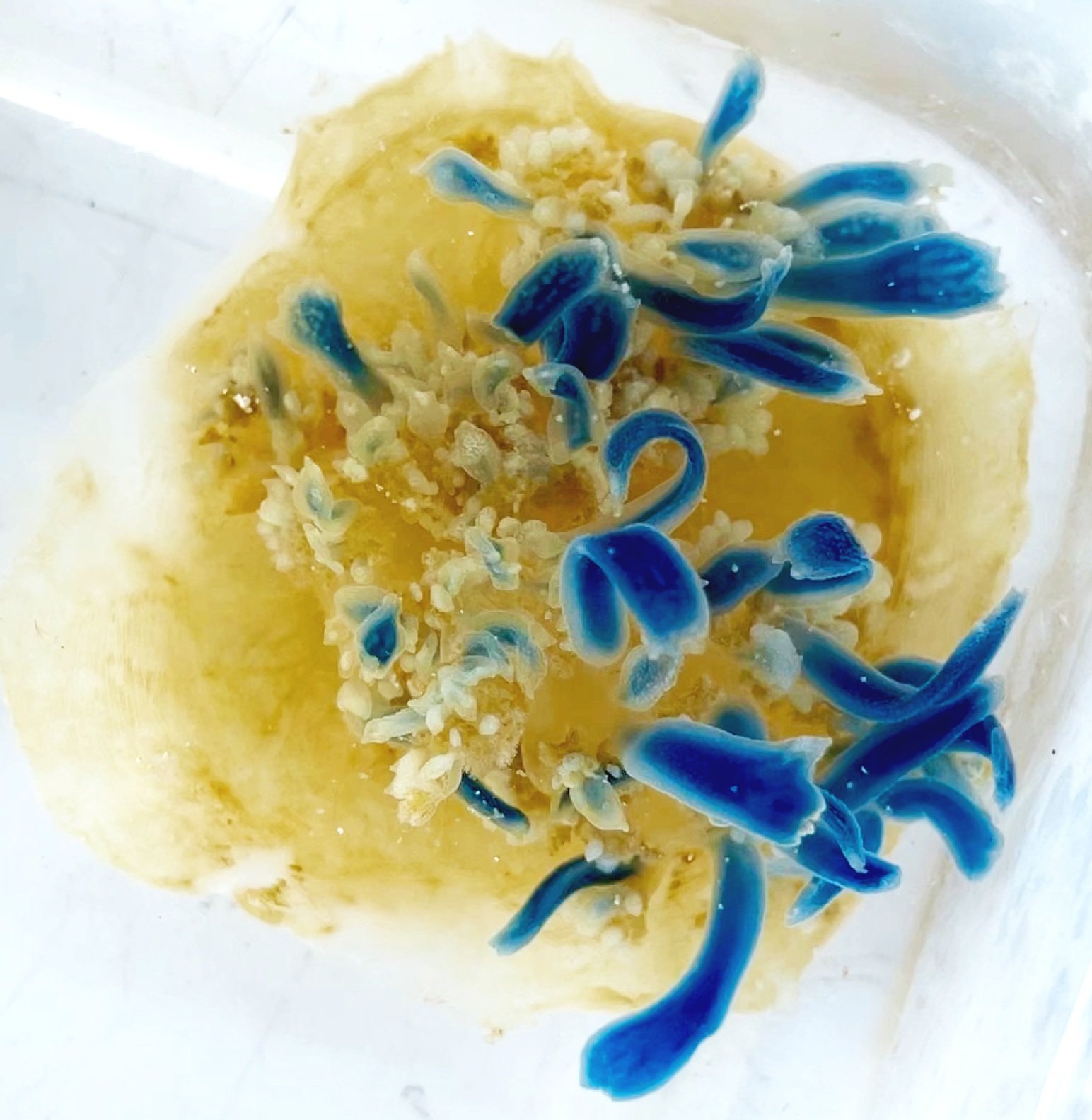Collaborative Research:
Integrating nanobiotechnologies to understand the role of nitro-oxidative stress in the coral-dinoflagellate mutualistic symbiosis dynamics
Photo credit: Hollie Putnam
NSF award 2316389
Aug. 2023 - Jul. 2026
OVERVIEW
Although the mechanism of coral bleaching, i.e. dysbiosis between cnidarian host and algal endosymbionts, is not fully known, it is understood that a combination of excess free-radicals, a deficient antioxidant system and innate immune responses are central to the breakdown of symbiosis through cellular damage. The symbiosis between reef-building corals and dinoflagellate algae is at the center of tropical marine ecosystems which support a biodiversity rivaling that of rainforests, an economy worth US$36 billion and over 1 billion people. Environmental stress threatens symbiosis equilibrium, regulatory crosstalk, partner recognition and nutritional exchanges between host and symbiont. Recurrent mass bleaching events recorded for the last two decades have left coral reefs highly degraded, putting in question their survival past 2050. Current conservation and restoration efforts are hindered by a gap in our understanding of the molecular, cellular and microenvironmental dynamics of symbiotic dysbiosis and coral bleaching. Here we propose to integrate recent advances in cellular-level coral research, nanobiotechnology and engineering with gene expression and metabolomics to elucidate the dynamics of free-radical stress (also known as nitro-oxidative stress) and dysbiosis in cnidarian-dinoflagellate mutualistic symbiosis. While the intricacies of the coral holobiont (i.e. the coral host and its complex microbiome, algal symbiont included) are challenging because of all potential interactions between partners, our approach will strive to understand each partner’s involvement in the accumulation of free- radicals during stress on spatial scales ranging from molecules to cells and tissues to organisms. To this end, the proposed project will: (Aim 1) characterize free-radical spatio-temporal dynamic in isolation and in symbiosis; (Aim 2) characterize the cellular responsiveness to controlled, targeted nitro-oxidative stress; and (Aim 3) manipulate and track the response to nitro-oxidative stress in a 3D bionic coral model.
Project co-PIs: Hollie Putnam & Daniel Wangpraseurt
Cassiopea research
Overview: Heat shock expression in C. xamachana
The upside-down jellyfish, Cassiopea xamachana, is becoming a model system to study the cnidarian-dinoflagellate symbiosis as well as a potential bioindicator species of ecosystem health as environments. One line of research currently being pursued is to understand how this species of benthic, shallow water jellyfish responds to increase in temperatures on the cellular level. Similar to corals, this species can also experience bleaching. However unlike corals, the upside down jellyfish prefers to inhabit mangroves and estuaries, where warmer temperatures, low flow, higher salinity and lower oxygen levels dominate. Because of this, it is theorized that C. xamachana are more thermotolerant. To understand this, current research is focussing on heat shock protein expression (i.e., protein chaperons helping with folding) at the cellular level different environmental conditions. The goal here is to compare results across corals, upside-down jellyfish and glass anemones.
Photo credits: Liza Roger
Exaiptasia model system
Photo credits: Liza Roger
Overview
Exaiptasia diaphana is among the model systems used to study the cnidarian-Symbiodiniaceae symbiosis. In the lab we used E. diaphana for multi-model comparisons (with corals and upside-down jellyfish).
E. diaphana is particularly interesting as a model because its relationship with Symbiodiniaceae is facultative, meaning it can live in an aposymbiotic state (i.e., without symbionts) which allows us to study the differences between the two states.
Symbiodiniaceae research
Photo credit: Allison M. Lewis
Active culture: Breviolum minutum
Coming soon: Durusdinium trenchii






